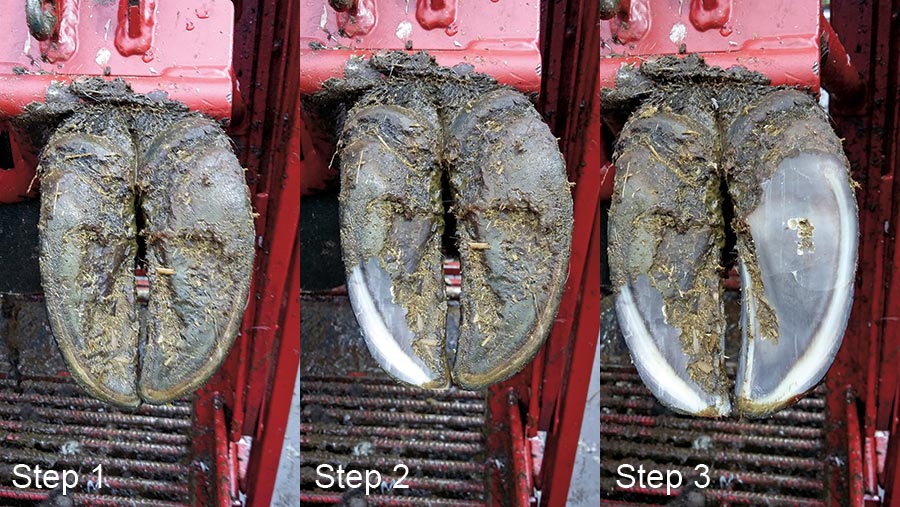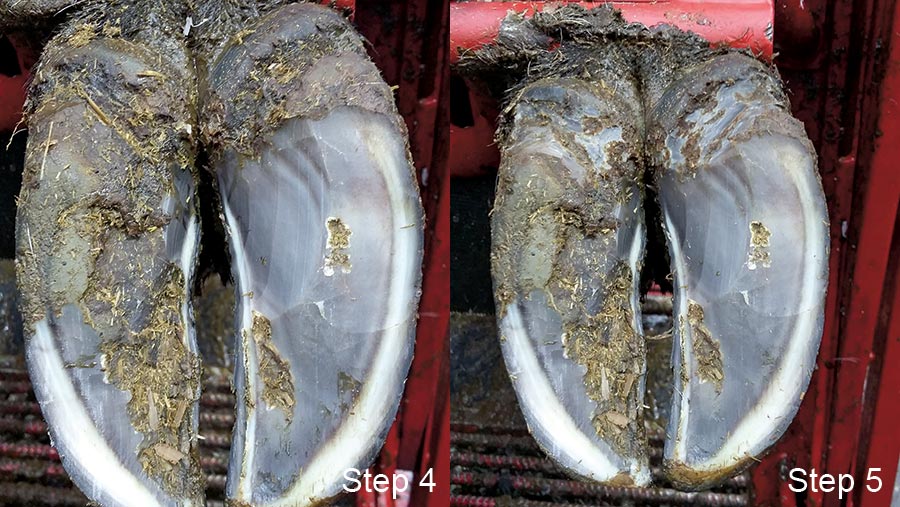Step-by-step guide to foot-trimming in beef cattle
Beef producers are being advised to adopt the mindset of dairy farmers when it comes to tackling lameness in their herds.
The economic losses associated with poor foot health can be as significant in a beef animal as in a milking cow.
Weight gain is reduced and a lame animal will take longer to finish, which means shed space is occupied, it requires more feed and labour and overall, increases the cost of production.
See also: Defra opens £60m grant scheme for equipment purchases
Follow this step-by-step photo guide to successful foot trimming:

Step 1
Start with inside claw and trim to the appropriate length – 7.5cm for a small suckler cow or 8-8.5cm for larger breeds.
Once the toe is trimmed to the correct length, trim sole flat and spare the heel. Overtrimming the heel results in a shallower foot angle and increases the risk of digital dermatitis through increased contact with slurry.
The walls should never be trimmed as these are the main weight-bearing areas.
Step 2
Move to the outside claw and trim the toe to match that of the inside claw – this image shows that this action is not required in this cow. Trim the sole flat to balance the heels for equal weight-bearing.
Again, the walls should not be trimmed in order to shape the foot as this removes the strongest weight-bearing areas.
Step 3
Modelling out. A small area is dished out from the sole on the inside claw – note that this should not extend into the bottom-third of the foot towards the toe.
A larger model is trimmed on the outside claw. Modelling aids slurry flow through the claw and reduces the risk of manure building up between the claws, and so reduces the risk of infectious causes of lameness.

Steps 4 & 5
The final two steps deal with problems on the foot.
Step four involves resting the damaged claw by placing a block on the sound claw, usually the inside claw. In this example, this step was not required as there were no problems.
Step 5 involves removing loose or underrun horn from the back two-thirds of the outside claw and both heels. In this example, the cow had mild slurry heel and so the loose horn was removed without affecting heel height.
Images courtesy of Sara Pedersen
